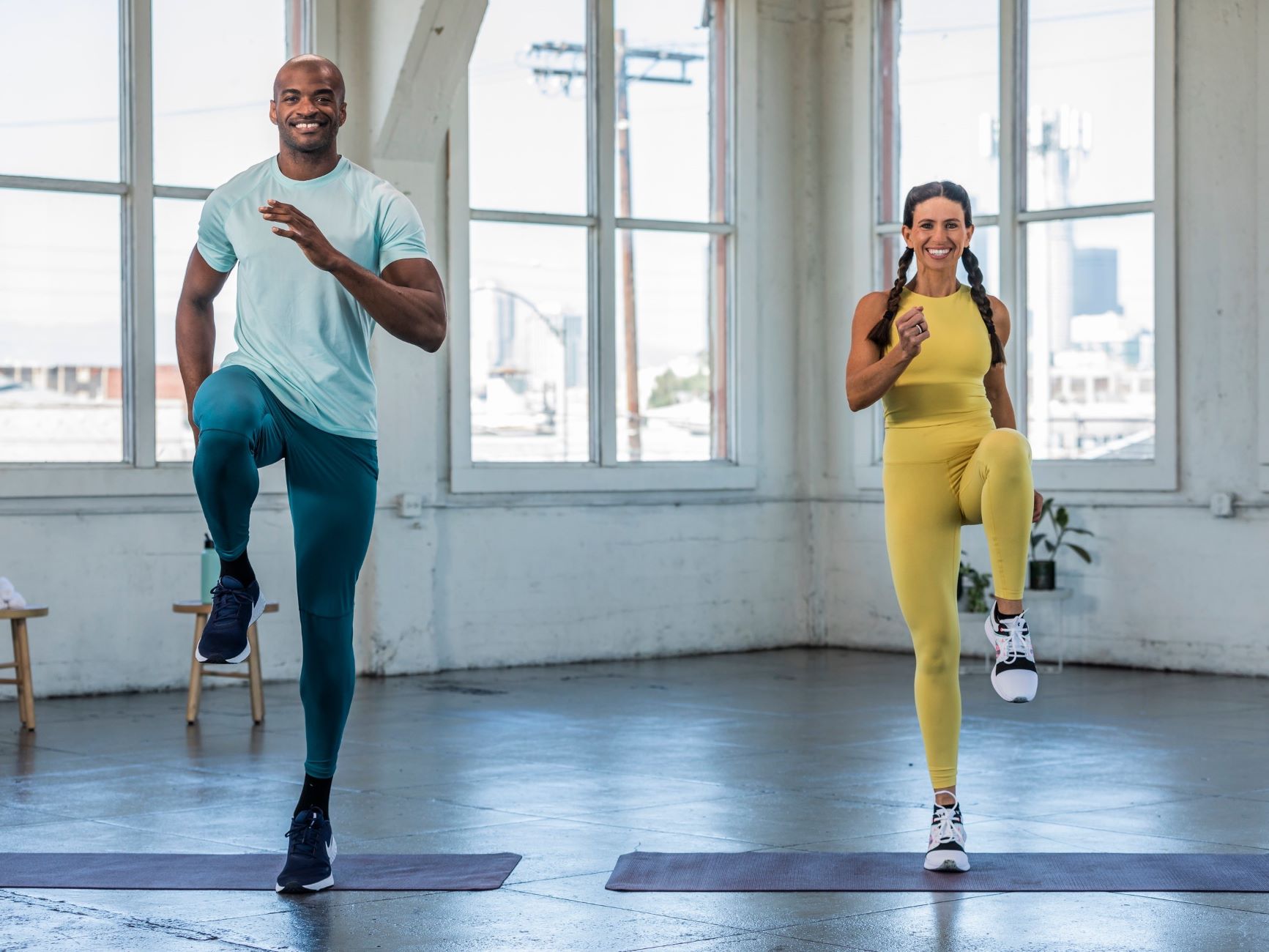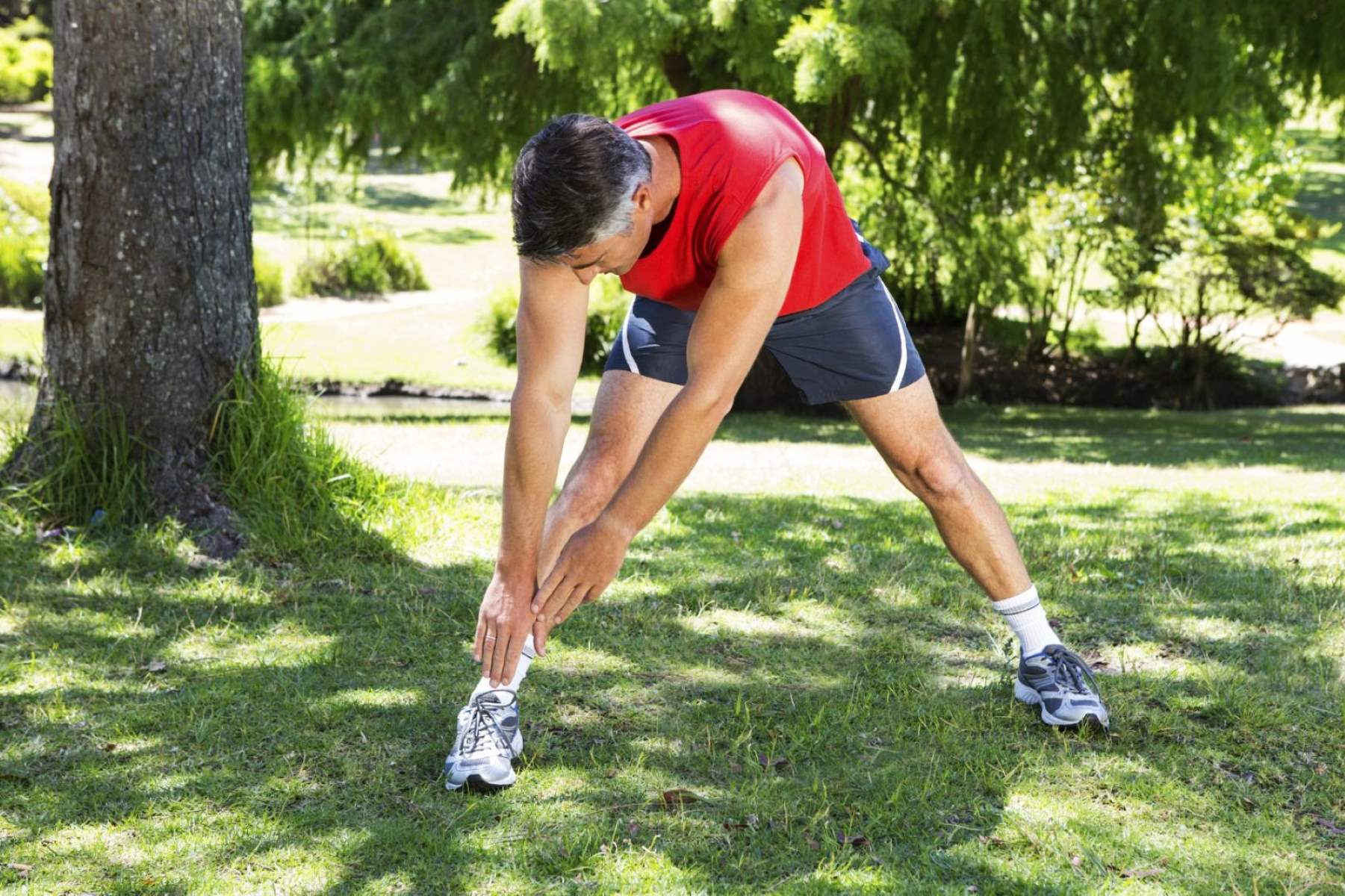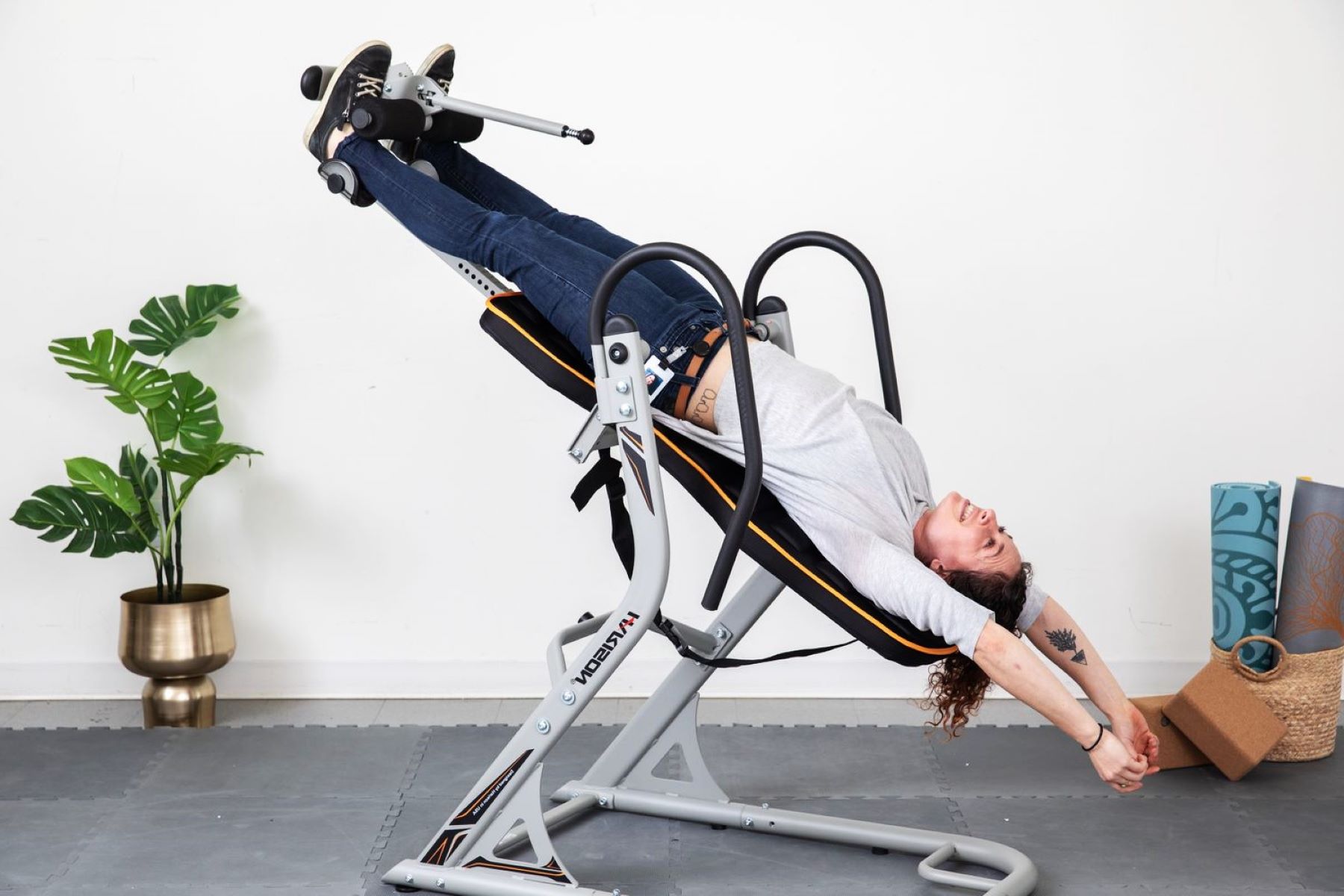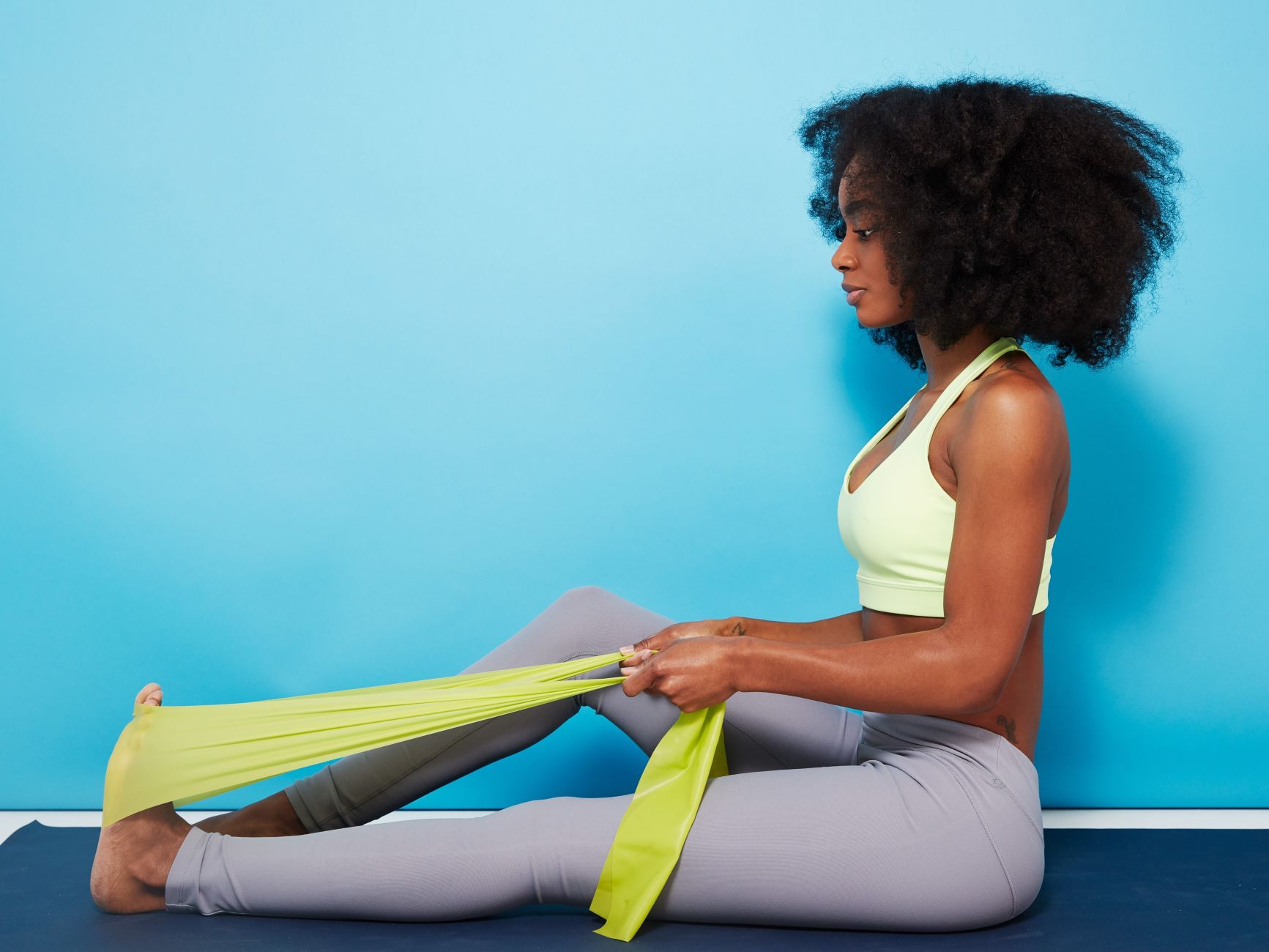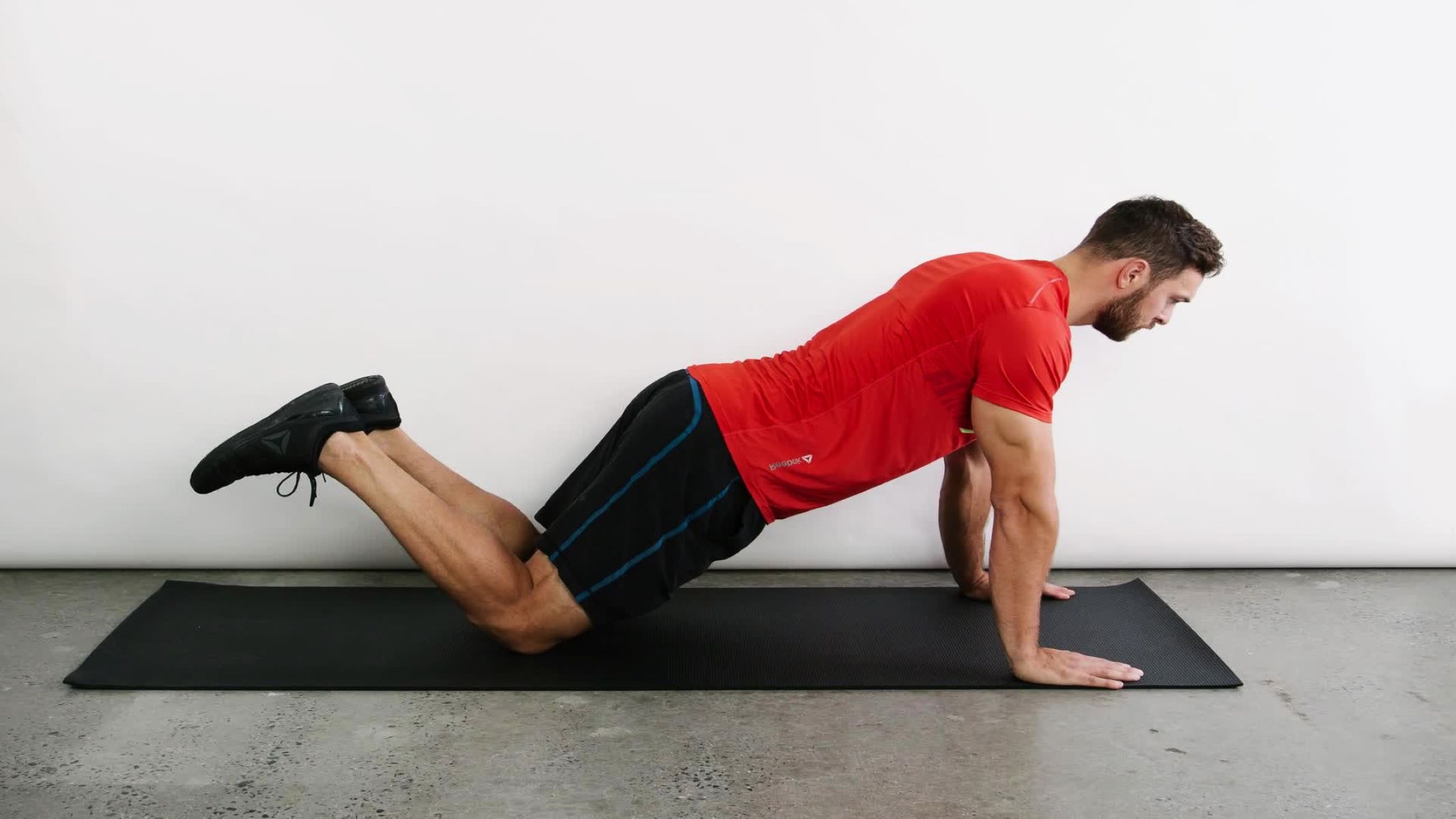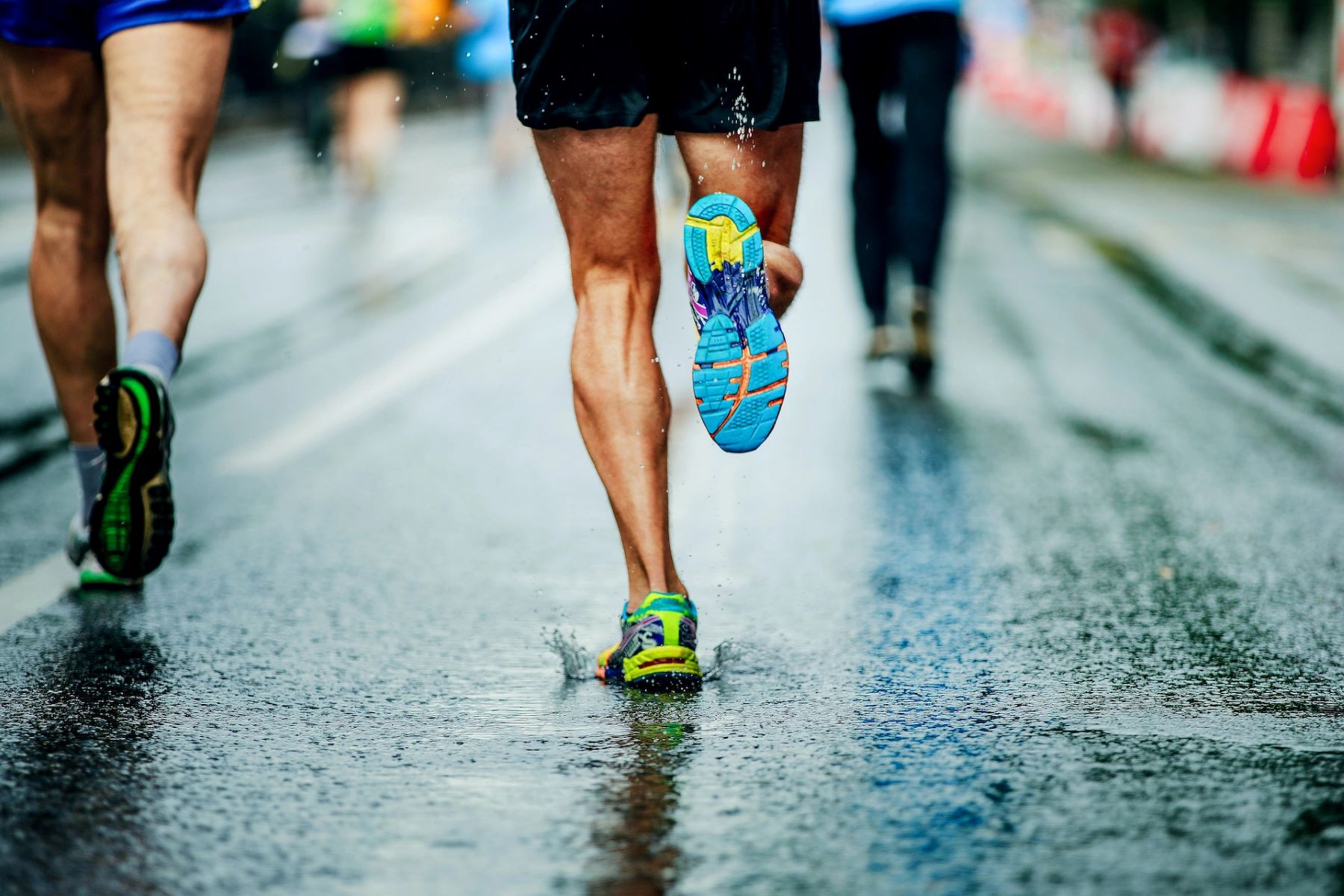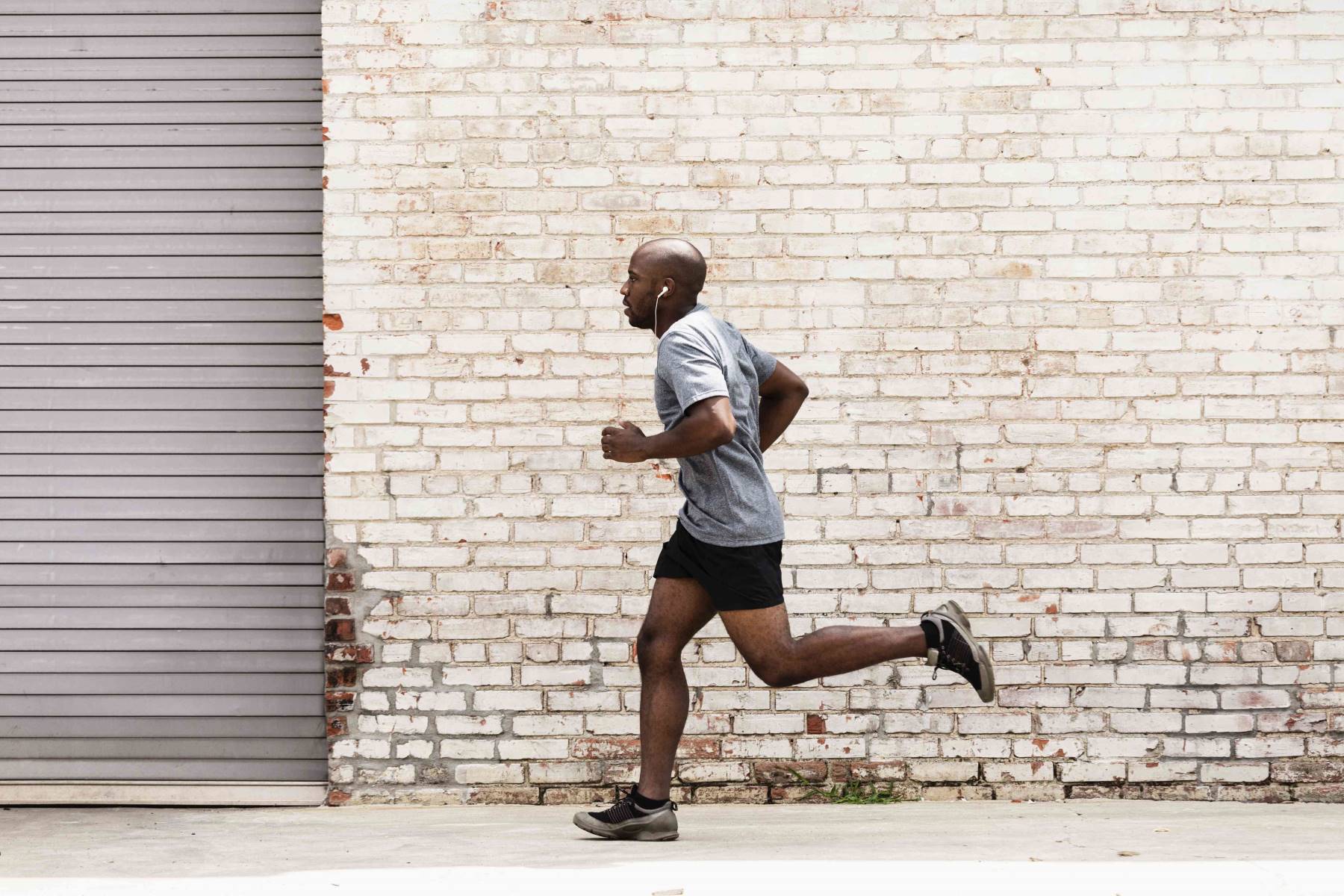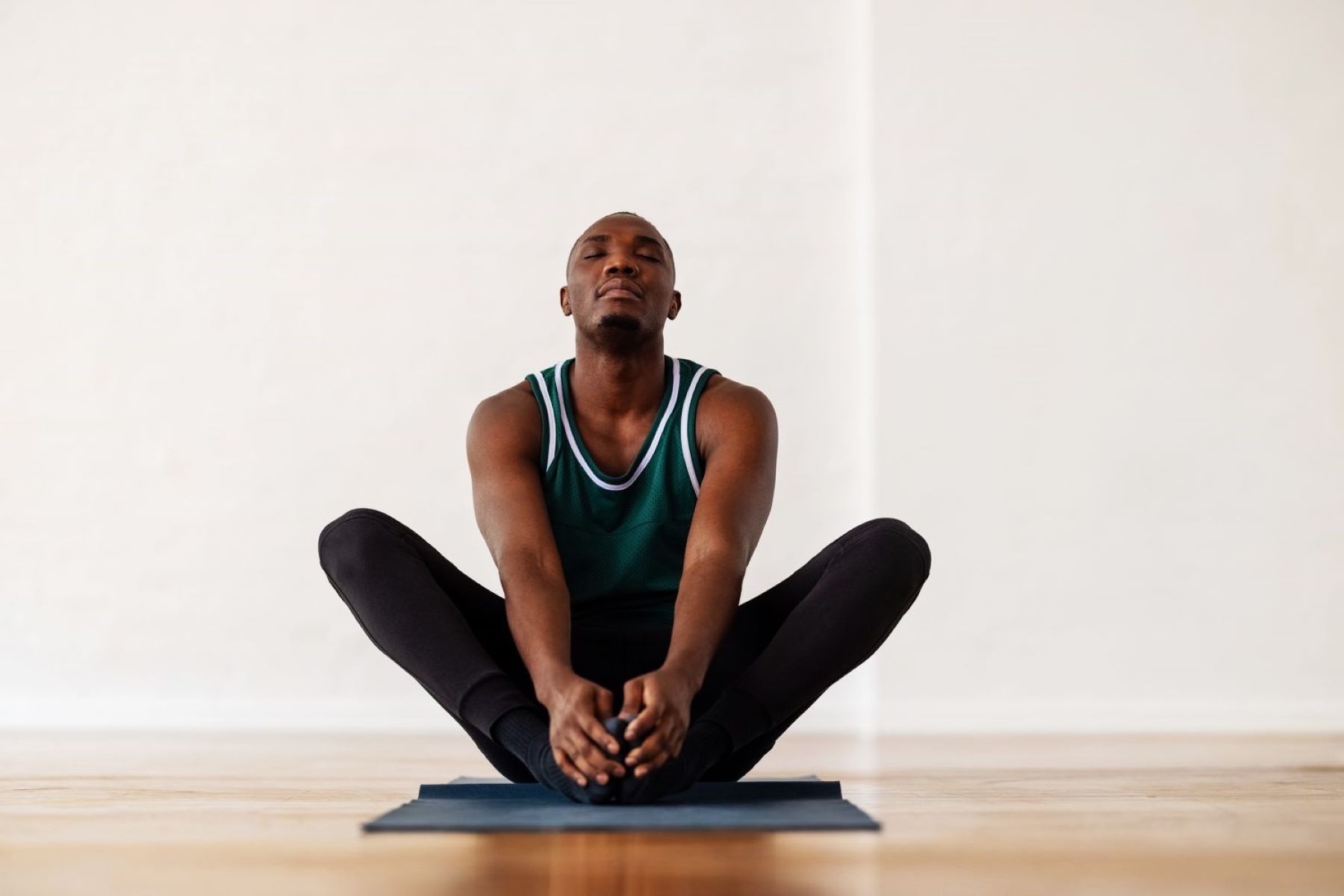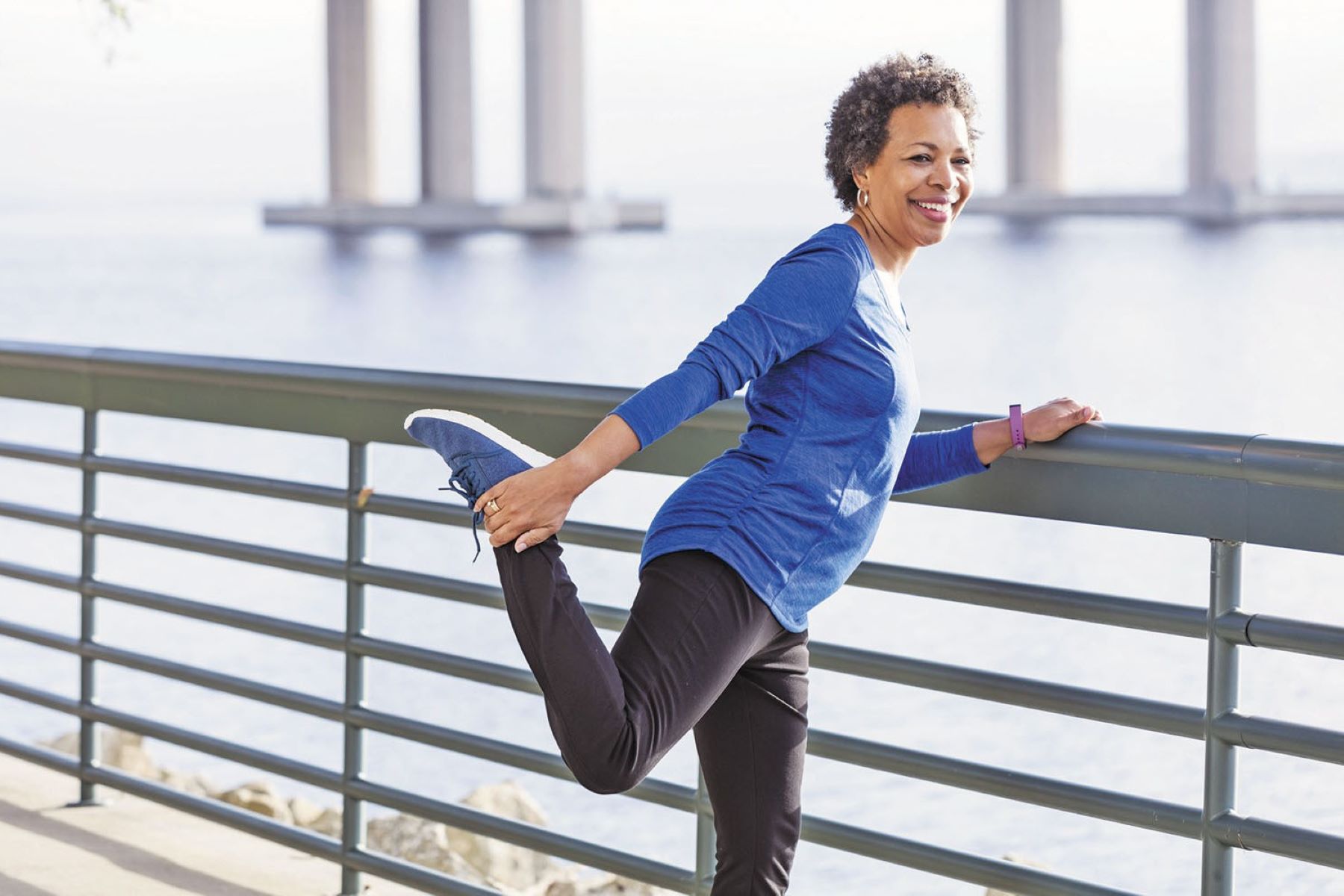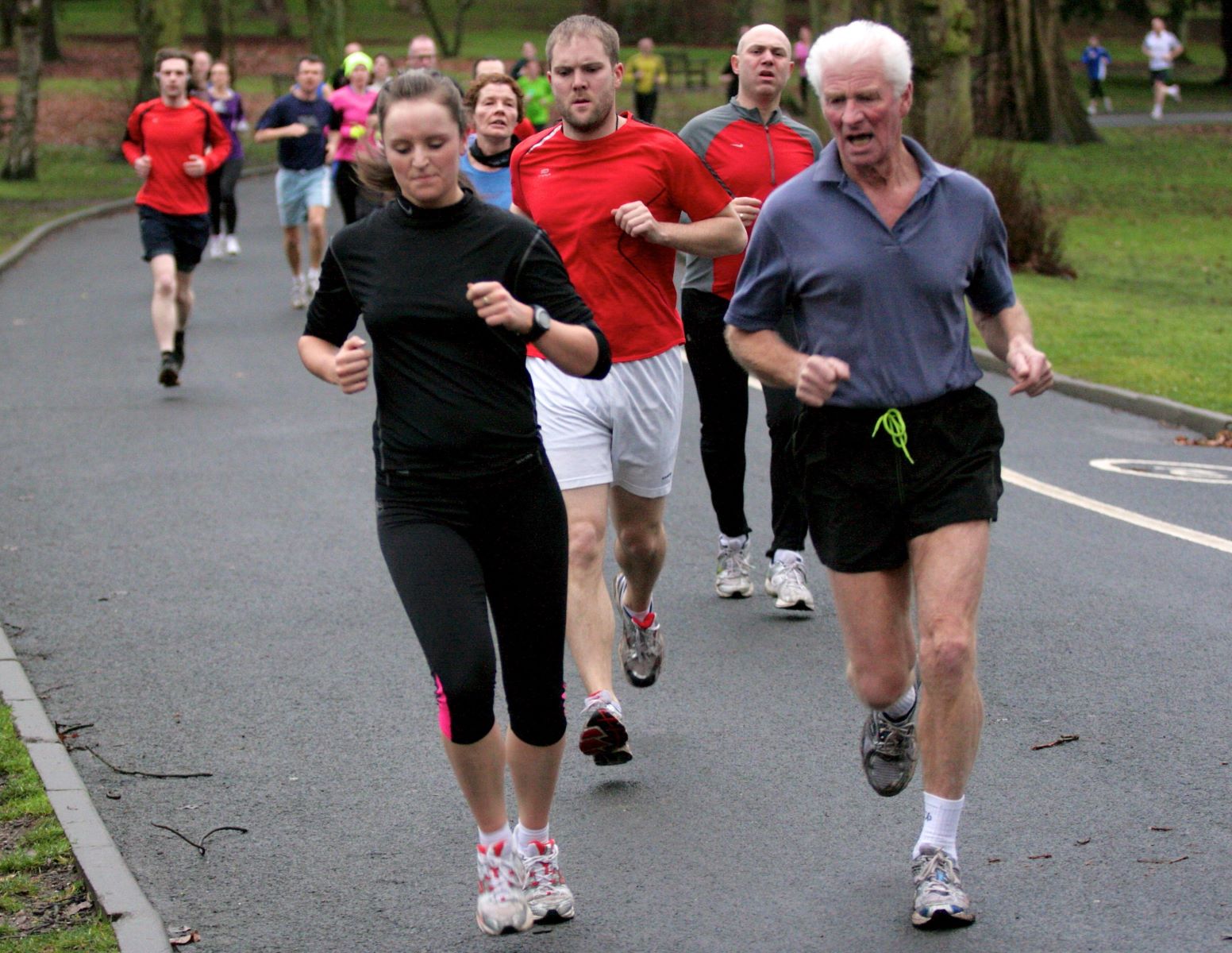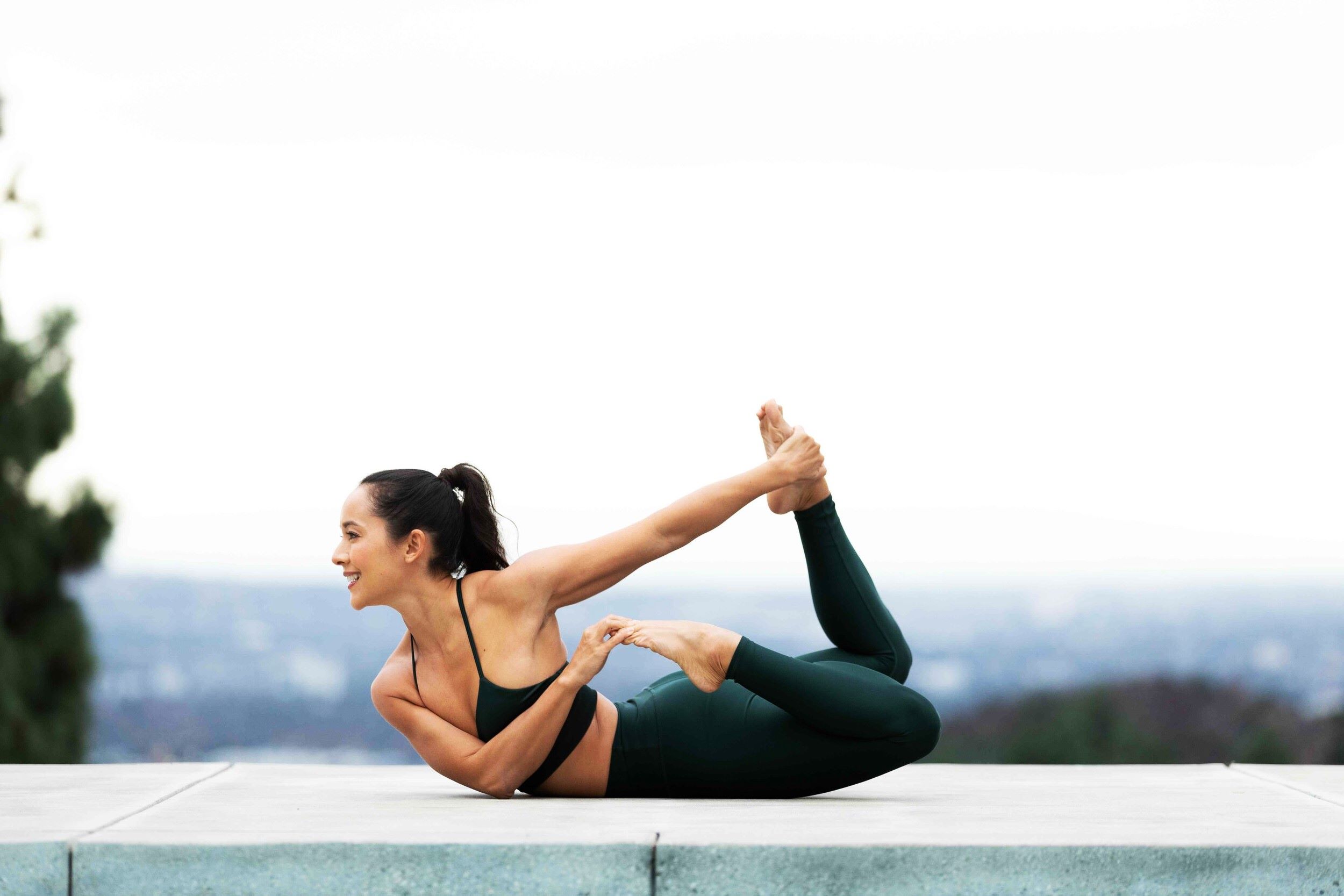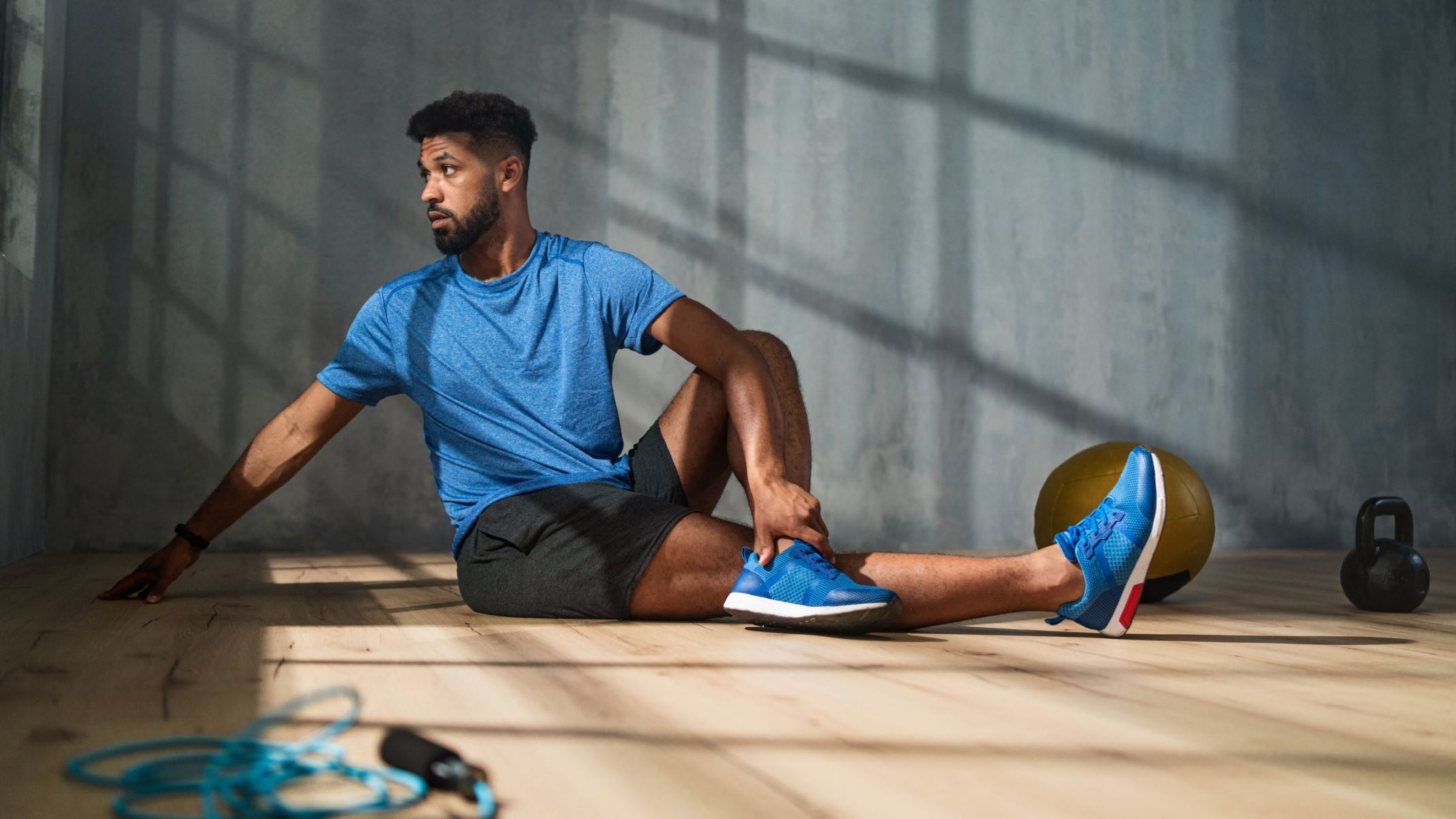Home>Health & Nutrition>Injury Prevention>5 Effective Dynamic Stretches To Include In Your Running Warm-up
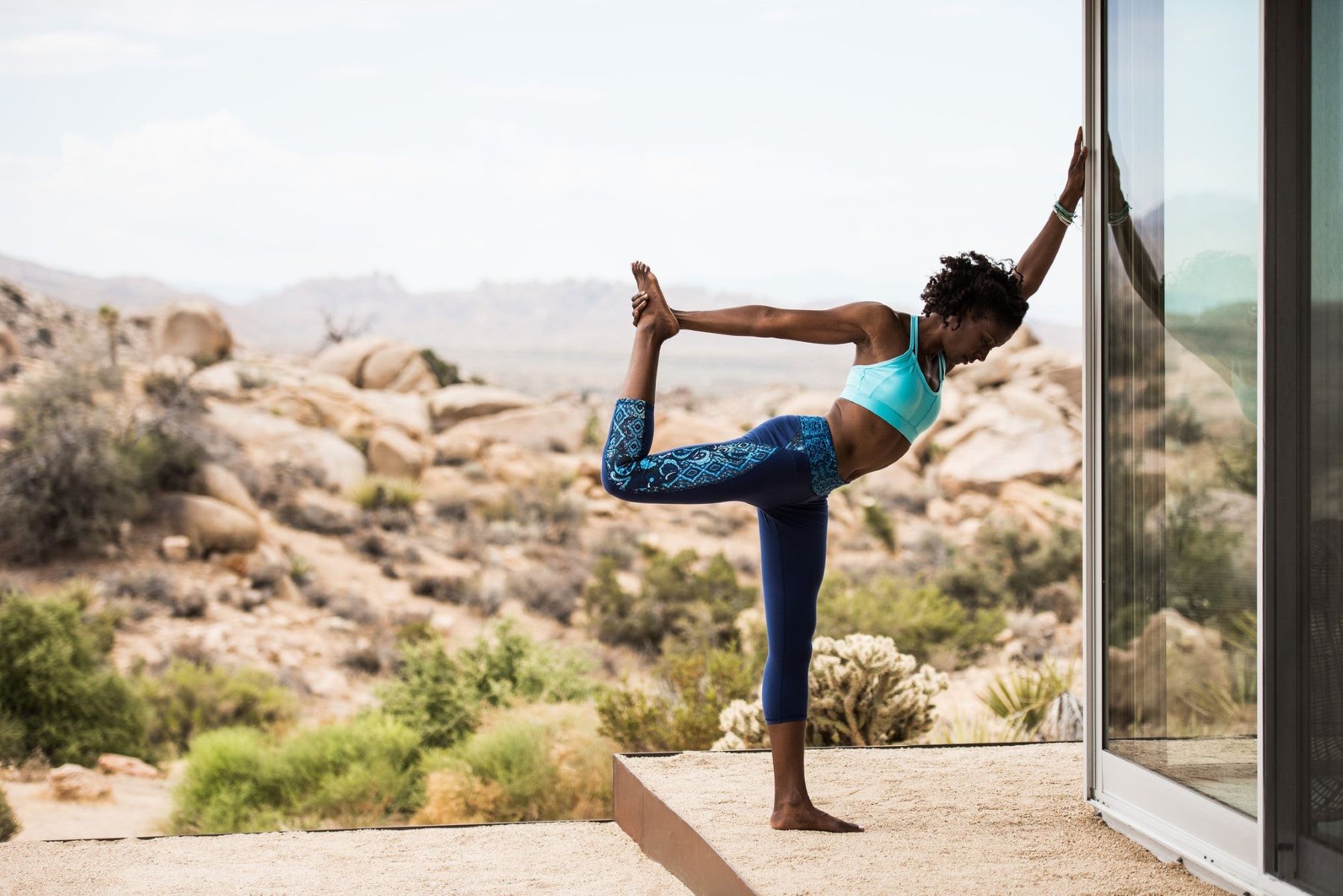

Injury Prevention
5 Effective Dynamic Stretches To Include In Your Running Warm-up
Published: February 25, 2024
Prevent running injuries with these 5 effective dynamic stretches for your warm-up routine. Incorporate these stretches to improve flexibility and reduce the risk of injury.
(Many of the links in this article redirect to a specific reviewed product. Your purchase of these products through affiliate links helps to generate commission for Therunningadvisor.com, at no extra cost. Learn more)
Table of Contents
Importance of Dynamic Stretching for Runners
Dynamic stretching is a crucial component of a runner's warm-up routine, playing a pivotal role in preparing the body for the physical demands of running. Unlike static stretching, which involves holding a single position for an extended period, dynamic stretching involves continuous movement through a full range of motion. This type of stretching not only increases flexibility but also enhances muscle activation and blood flow, thereby reducing the risk of injury during running.
For runners, dynamic stretching offers a myriad of benefits that directly contribute to improved performance and overall well-being. Firstly, it helps to increase the body's core temperature, which is essential for optimal muscle function. By engaging in dynamic stretches, runners can elevate their heart rate and stimulate the nervous system, priming the body for the vigorous activity ahead.
Moreover, dynamic stretching targets specific muscle groups that are heavily engaged during running, such as the quadriceps, hamstrings, calves, and hip flexors. By incorporating dynamic stretches that mimic the movements of running, runners can effectively loosen tight muscles and improve their range of motion. This, in turn, promotes better running mechanics and reduces the likelihood of muscle strains and joint injuries.
In addition to physical benefits, dynamic stretching also plays a crucial role in mental preparation. It allows runners to focus on their breathing, posture, and form, fostering a mind-body connection that is essential for optimal performance. By engaging in dynamic stretching, runners can mentally transition from a state of rest to one of heightened physical readiness, setting the stage for a successful and injury-free run.
Overall, dynamic stretching is an indispensable tool for runners seeking to maximize their performance and minimize the risk of injury. By incorporating dynamic stretches into their warm-up routine, runners can effectively prepare their bodies for the demands of running, enhance their flexibility and range of motion, and cultivate a focused and prepared mindset. This holistic approach to warm-up not only sets the stage for a successful run but also contributes to the long-term health and well-being of runners.
Dynamic Stretch 1: Leg Swings
Leg swings are a fundamental dynamic stretching exercise that targets the lower body, specifically the hamstrings, quadriceps, and hip flexors. This dynamic stretch involves controlled and rhythmic leg movements, promoting increased blood flow, flexibility, and range of motion in the lower extremities. As a runner, incorporating leg swings into your warm-up routine can significantly enhance your overall performance and reduce the risk of injury.
To perform leg swings, find a stable support such as a wall or a sturdy object to maintain balance. Stand tall with your feet shoulder-width apart and engage your core muscles for stability. Begin by holding onto the support with one hand while lifting the opposite leg off the ground. With a straight leg, swing it forward and backward in a controlled manner, focusing on the natural range of motion of your hip joint. Gradually increase the height of the swing as your muscles warm up and become more pliable.
The rhythmic motion of leg swings not only activates the muscles but also improves joint mobility, making it an ideal warm-up exercise for runners. By dynamically stretching the hamstrings and quadriceps, leg swings help alleviate muscle tightness and enhance the flexibility of the lower body. Additionally, the controlled movement of leg swings stimulates blood flow to the targeted muscles, promoting increased circulation and nutrient delivery, which is essential for optimal muscle function during running.
Furthermore, leg swings serve as an effective tool for improving balance and proprioception, which are crucial for maintaining stability and proper form while running. The dynamic nature of this stretch encourages the activation of stabilizing muscles, thereby enhancing overall coordination and reducing the risk of falls or missteps during a run.
Incorporating leg swings into your running warm-up routine can have a profound impact on your performance and injury prevention. By engaging in this dynamic stretch, you are not only priming your muscles for the demands of running but also promoting better joint mobility, flexibility, and balance. As a result, you can expect improved running mechanics, reduced muscle tension, and a decreased likelihood of sustaining injuries related to tight or underprepared muscles.
In summary, leg swings are a valuable addition to any runner's warm-up routine, offering a multitude of benefits that directly contribute to enhanced performance and injury prevention. By dedicating time to this dynamic stretch, runners can optimize their physical readiness, improve muscle flexibility, and cultivate the ideal foundation for a successful and injury-free run.
Dynamic Stretch 2: Walking Lunges
Walking lunges are a dynamic stretching exercise that holds immense value for runners as a vital component of their warm-up routine. This dynamic stretch targets the lower body, engaging the quadriceps, hamstrings, glutes, and hip flexors, thereby preparing these muscles for the rigors of running. The controlled and deliberate movement involved in walking lunges not only enhances flexibility but also promotes improved muscle activation and blood circulation, setting the stage for a successful and injury-free run.
To perform walking lunges, start by standing tall with your feet hip-width apart and your hands on your hips. Take a step forward with your right leg, ensuring that your knee is positioned directly above your ankle. Lower your body by bending both knees until your rear knee is just above the ground, maintaining a straight back and an upright torso. Push off your front foot to bring your rear leg forward, repeating the same motion on the opposite side. Continue this fluid and rhythmic movement, alternating between legs as you progress forward.
The deliberate and continuous nature of walking lunges effectively warms up the muscles and joints essential for running. By engaging in this dynamic stretch, runners can expect to experience increased flexibility in the hip flexors and enhanced range of motion in the lower body. This is particularly beneficial for runners, as it contributes to improved running mechanics and reduces the risk of muscle strains or joint injuries during a run.
Furthermore, walking lunges serve as an effective tool for strengthening the lower body and improving overall stability. The controlled movement involved in this dynamic stretch engages the quadriceps, hamstrings, and glutes, promoting muscle activation and endurance. Additionally, the balance and coordination required to perform walking lunges contribute to improved proprioception, which is essential for maintaining stability and proper form while running.
Incorporating walking lunges into a running warm-up routine offers a multitude of benefits that directly contribute to enhanced performance and injury prevention. By engaging in this dynamic stretch, runners can effectively prepare their lower body for the demands of running, enhance their flexibility and range of motion, and cultivate a focused and prepared mindset. This holistic approach to warm-up not only sets the stage for a successful run but also contributes to the long-term health and well-being of runners.
In summary, walking lunges are a valuable addition to any runner's warm-up routine, offering a myriad of benefits that directly contribute to improved performance and injury prevention. By dedicating time to this dynamic stretch, runners can optimize their physical readiness, improve muscle flexibility, and cultivate the ideal foundation for a successful and injury-free run.
Dynamic Stretch 3: High Knees
High knees are a dynamic stretching exercise that holds significant value for runners as a crucial element of their warm-up routine. This dynamic stretch targets the lower body, specifically engaging the quadriceps, hip flexors, and core muscles, thereby priming these essential muscle groups for the physical demands of running. The rhythmic and deliberate movement involved in high knees not only enhances flexibility but also promotes improved muscle activation and blood circulation, setting the stage for a successful and injury-free run.
To perform high knees, begin by standing tall with your feet hip-width apart and your arms positioned at your sides. Lift your right knee as high as possible while simultaneously raising your left arm, then quickly alternate to lift your left knee and right arm. Continue this fluid and continuous movement, maintaining a brisk pace and focusing on lifting your knees to a height that is comfortable for you. The rhythmic motion of high knees effectively warms up the lower body muscles and joints, preparing them for the vigorous activity of running.
Engaging in high knees as part of a warm-up routine offers a multitude of benefits that directly contribute to enhanced performance and injury prevention for runners. By incorporating this dynamic stretch, runners can expect to experience increased flexibility in the hip flexors and enhanced range of motion in the lower body. This is particularly advantageous as it contributes to improved running mechanics and reduces the risk of muscle strains or joint injuries during a run.
Furthermore, high knees serve as an effective tool for improving cardiovascular endurance and overall lower body strength. The rapid and continuous movement involved in this dynamic stretch elevates the heart rate, stimulating blood flow and enhancing the delivery of oxygen and nutrients to the muscles. Additionally, the engagement of the core muscles during high knees contributes to improved stability and posture, essential for maintaining proper form and balance while running.
Incorporating high knees into a running warm-up routine not only prepares the body physically but also fosters a focused and prepared mindset. The rhythmic and dynamic nature of this stretch encourages runners to concentrate on their breathing, posture, and form, establishing a strong mind-body connection that is essential for optimal performance. By engaging in high knees, runners can mentally transition from a state of rest to one of heightened physical readiness, setting the stage for a successful and injury-free run.
In summary, high knees are a valuable addition to any runner's warm-up routine, offering a myriad of benefits that directly contribute to improved performance and injury prevention. By dedicating time to this dynamic stretch, runners can optimize their physical readiness, improve muscle flexibility, and cultivate the ideal foundation for a successful and injury-free run.
Dynamic Stretch 4: Butt Kicks
Butt kicks are a dynamic stretching exercise that holds immense value for runners as a vital component of their warm-up routine. This dynamic stretch targets the lower body, specifically engaging the quadriceps, hamstrings, and hip flexors, thereby preparing these essential muscle groups for the physical demands of running. The rhythmic and deliberate movement involved in butt kicks not only enhances flexibility but also promotes improved muscle activation and blood circulation, setting the stage for a successful and injury-free run.
To perform butt kicks, start by standing tall with your feet hip-width apart and your arms positioned at your sides. Begin by lifting your right heel towards your glutes while simultaneously swinging your left arm forward, then quickly alternate to lift your left heel towards your glutes while swinging your right arm forward. Continue this fluid and continuous movement, maintaining a brisk pace and focusing on the rhythmic motion of kicking your heels towards your glutes. The deliberate and continuous nature of butt kicks effectively warms up the lower body muscles and joints, preparing them for the vigorous activity of running.
Engaging in butt kicks as part of a warm-up routine offers a multitude of benefits that directly contribute to enhanced performance and injury prevention for runners. By incorporating this dynamic stretch, runners can expect to experience increased flexibility in the quadriceps and hamstrings, leading to enhanced range of motion in the lower body. This is particularly advantageous as it contributes to improved running mechanics and reduces the risk of muscle strains or joint injuries during a run.
Furthermore, butt kicks serve as an effective tool for improving lower body coordination and overall muscle endurance. The rapid and continuous movement involved in this dynamic stretch elevates the heart rate, stimulating blood flow and enhancing the delivery of oxygen and nutrients to the muscles. Additionally, the engagement of the core muscles during butt kicks contributes to improved stability and posture, essential for maintaining proper form and balance while running.
Incorporating butt kicks into a running warm-up routine not only prepares the body physically but also fosters a focused and prepared mindset. The rhythmic and dynamic nature of this stretch encourages runners to concentrate on their breathing, posture, and form, establishing a strong mind-body connection that is essential for optimal performance. By engaging in butt kicks, runners can mentally transition from a state of rest to one of heightened physical readiness, setting the stage for a successful and injury-free run.
In summary, butt kicks are a valuable addition to any runner's warm-up routine, offering a myriad of benefits that directly contribute to improved performance and injury prevention. By dedicating time to this dynamic stretch, runners can optimize their physical readiness, improve muscle flexibility, and cultivate the ideal foundation for a successful and injury-free run.
Dynamic Stretch 5: Ankle Bounces
Ankle bounces are a dynamic stretching exercise that holds immense value for runners as a vital component of their warm-up routine. This dynamic stretch specifically targets the lower body, focusing on the calves, ankles, and lower leg muscles, thereby preparing these essential muscle groups for the physical demands of running. The rhythmic and deliberate movement involved in ankle bounces not only enhances flexibility but also promotes improved muscle activation and blood circulation, setting the stage for a successful and injury-free run.
To perform ankle bounces, start by standing tall with your feet hip-width apart and your arms positioned at your sides. Begin by lifting your body off the ground by pushing through the balls of your feet, allowing your heels to lift slightly off the ground. As you land back on the ground, quickly rebound and lift your body again, maintaining a brisk and continuous bouncing motion. Focus on the rhythmic movement of your ankles and lower legs, ensuring that the motion is controlled and deliberate.
Engaging in ankle bounces as part of a warm-up routine offers a multitude of benefits that directly contribute to enhanced performance and injury prevention for runners. By incorporating this dynamic stretch, runners can expect to experience increased flexibility and strength in the calves and ankles, leading to improved shock absorption and propulsion during running. This is particularly advantageous as it contributes to improved running mechanics and reduces the risk of overuse injuries or muscle strains during a run.
Furthermore, ankle bounces serve as an effective tool for improving lower leg stability and overall muscle endurance. The rapid and continuous movement involved in this dynamic stretch activates the lower leg muscles, stimulating blood flow and enhancing the delivery of oxygen and nutrients to the area. Additionally, the engagement of the core muscles during ankle bounces contributes to improved stability and balance, essential for maintaining proper form and reducing the risk of ankle-related injuries while running.
Incorporating ankle bounces into a running warm-up routine not only prepares the body physically but also fosters a focused and prepared mindset. The rhythmic and dynamic nature of this stretch encourages runners to concentrate on their lower leg movements, establishing a strong mind-body connection that is essential for optimal performance. By engaging in ankle bounces, runners can mentally transition from a state of rest to one of heightened physical readiness, setting the stage for a successful and injury-free run.
In summary, ankle bounces are a valuable addition to any runner's warm-up routine, offering a myriad of benefits that directly contribute to improved performance and injury prevention. By dedicating time to this dynamic stretch, runners can optimize their physical readiness, improve lower leg flexibility, and cultivate the ideal foundation for a successful and injury-free run.

